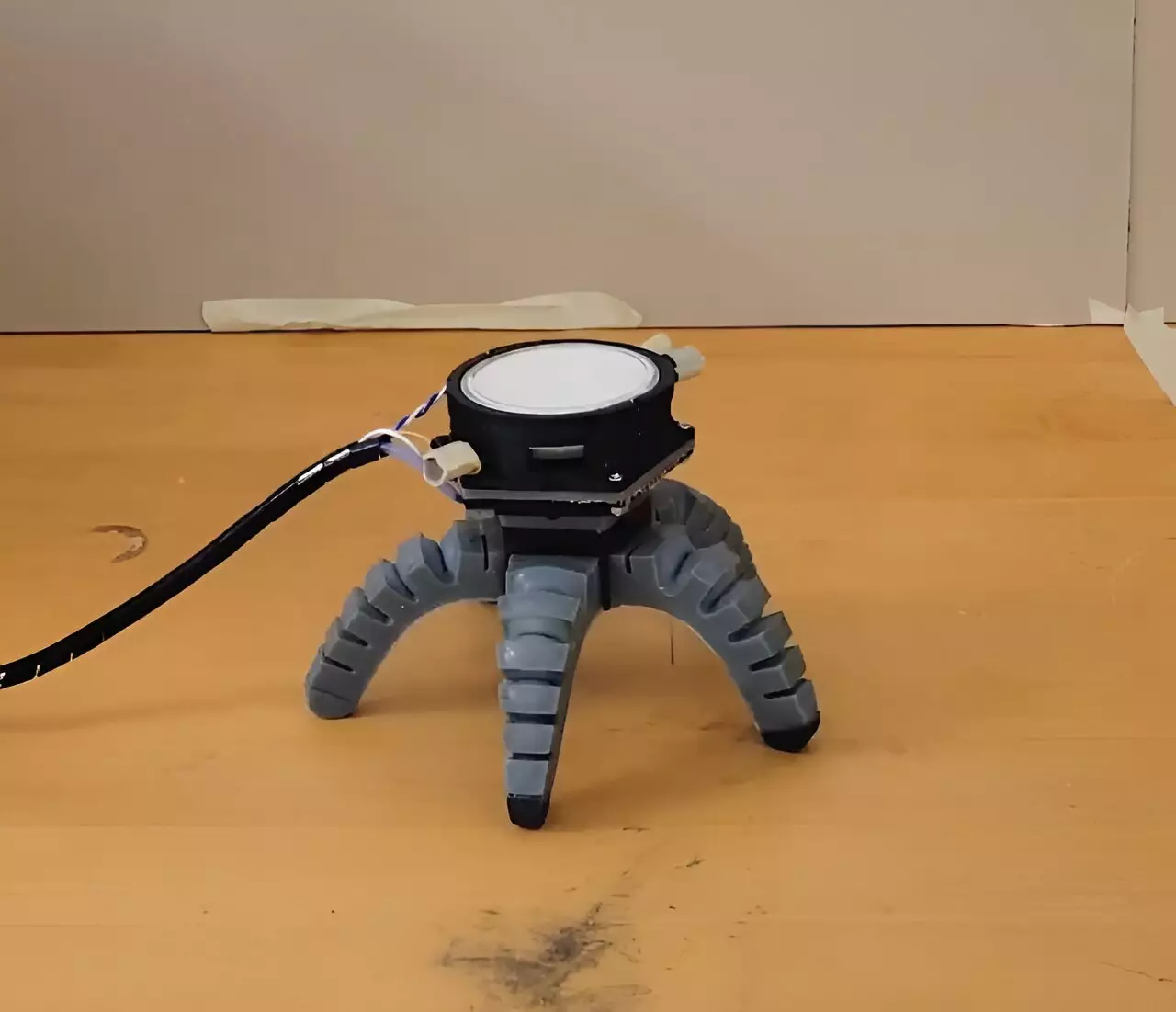Advancements in technology frequently draw inspiration from the natural world, shaping innovations that blend biological complexity with engineered design. Recent work from Cornell University illustrates just how profound this integration can be, as researchers have elevated robotics to an unprecedented level by incorporating fungal mycelia into robot architecture. This approach not only demonstrates the potential of nature-inspired design but also poses intriguing questions about the future of robotics and its ability to adaptively interact with its environment.
At the heart of this groundbreaking study is mycelium, the vegetative portion of fungi that thrives in the soil. Traditionally dismissive of the potential applications of fungi outside of culinary and medical fields, the researchers at Cornell have identified mycelia as an innovative component, capable of producing electrical signals that can control robotic actions. This discovery marks a significant leap in creating what they refer to as “biohybrid” robots—machines that are not wholly synthetic but instead possess a blend of living biological elements.
By leveraging mycelia’s inherent properties, researchers aim to boost the sensory and responsive capabilities of these robots beyond what is currently achievable with traditional sensors. Such developments point to a future where machines could maintain ecological awareness, allowing them to respond dynamically to varied stimuli in environments that are anything but predictable. For instance, this technology could lead to agricultural robots that measure soil health and adjust nutrient delivery based on real-time conditions.
Creating these biohybrid robots required an interdisciplinary approach, integrating fields such as mechanical engineering, mycology, and neurobiology. The integration of mycelium into robotics is not merely a matter of adding a new material; it’s about merging distinct disciplines to generate a system that operates cohesively. Anand Mishra, the lead author and researcher in the project, highlights the necessity of diverse skill sets to weave together living organisms with electronic systems effectively.
The process started with carefully cultivating clean mycelia cultures, inspired by methodologies from plant pathology. Mishra and his collaborators devised an electrical interface specifically designed to record the mycelia’s electrophysiological activity while filtering out extraneous noise. This meticulous attention to methodological details underscores how fragile and complex living systems can be when co-opted for robotic applications.
Furthermore, the project has raised the profile of mycelium in the realm of scientific discourse. Through teamwork with experts in related fields, the study affirms the importance of collaboration in scientific research, allowing for innovative solutions that would be unattainable in silos.
The researchers designed two distinct biohybrid robots: a spider-like soft robot and a wheeled counterpart. Their experiments illustrated mycelia’s ability to govern movement; both robots successfully reacted to environmental changes by adjusting their gaits and rolling behaviors when stimulated by light. This experimentation validated the hypothesis that living systems could serve as responsive elements within robotic frameworks.
However, it is the capability to override the mycelial signals entirely that unveils deeper implications for future technological implementations. This dual control mechanism, allowing both organic and digital commands, provides a substantial step towards achieving autonomous functionalities in robots. It showcases not only the potential of responsive robotics but also emphasizes the symbiotic relationship between living systems and engineered constructs.
The implications of this research reach far beyond the laboratory setting or even the field of robotics. This advancement opens questions about connections between artificial systems and living organisms. Such innovative integrations might allow for a more nuanced understanding of environmental signals, translating those signals into actionable responses that promote ecosystem sustainability.
Mishra notes that understanding these signals is crucial, as they can provide insight into the overall health of the organism and the environment it inhabits. Robots equipped with this capacity allow for not merely reactionary solutions but proactive measures to mitigate adverse ecological effects, such as harmful algal blooms or soil depletion.
The future of biohybrid robotics points to a landscape where machines and nature coalesce, presenting opportunities for advancements that remain cognizant and responsible. As researchers continue to explore the endless possibilities afforded by incorporating biological elements into technological frameworks, it becomes progressively essential to consider how such integrations can foster healthier ecosystems and enhance the functionality of robotic systems in a rapidly changing world.
Ultimately, this research paradigm exemplifies the fascinating intersection of biology and robotics, paving the way for next-generation technologies that prioritize environmental harmony as much as technological innovation.


Leave a Reply